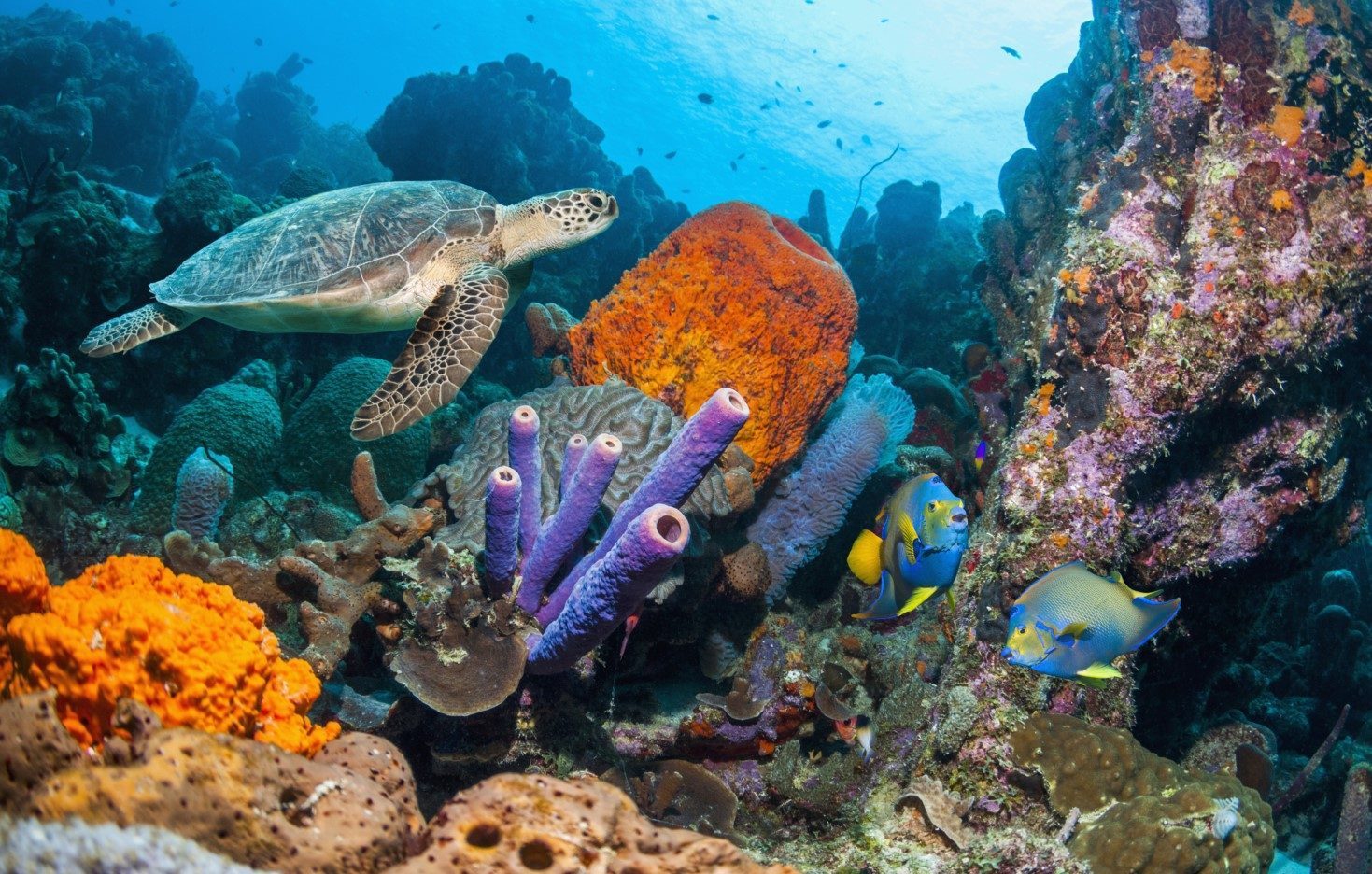In its 2020 Global Risks Report, the World Economic Forum estimated that $44 trillion, or around 50% of global GDP, is either highly or moderately dependent on nature and its services. Just like climate change, biodiversity loss and species’ extinction should now be considered systemic risks, which demand that businesses and investors take a holistic approach to addressing them.
The role of the financial community in solving these twin crises cannot be underestimated: it is estimated we need $4.1 trillion by 2050 to address climate change, biodiversity loss and land degradation.
Biodiversity: a systemic risk
“We need to understand nature loss as a systemic risk, just as we have come to understand climate change as an existential, systemic risk. As a result, we now need to factor natural capital into all of our decision-making, particularly into financial decision-making,” said Rachel Crossley, Head of Stewardship for Europe, BNP Paribas Asset Management, to set the scene for the panel discussion she moderated, with speakers from CDP, Gold Standard, the Prince Albert II of Monaco Foundation and UPM, at the recent BNP Paribas Sustainable Future Forum (SFF) 2021 Global Edition.

We need to understand nature loss as a systemic risk, just as we have come to understand climate change as an existential, systemic risk.
Rachel Crossley, Head of Stewardship for Europe, BNP Paribas Asset Management
Biodiversity loss is happening at an alarming rate
“Despite living on a blue planet, just 1% of the water is available for our use,” noted Cate Lamb, Global Director of Water Security at CDP, a not-for-profit organisation that operates the world’s largest and only corporate disclosure system for water, climate change and deforestation.

Despite living on a blue planet, just 1% of the water is available for our use.
Cate Lamb, Global Director of Water Security, CDP
“The UN is forecasting a shortfall of water supply vs. demand of 40% in nine years’ time. Meanwhile, the water we do have left is being polluted at unprecedented rates, with the UN estimating that 85% of wastewater is leaving homes, farms and factories untreated. This situation not only poses a substantial threat to freshwater biodiversity but when one considers that some chemicals leaving industrial facilities are carcinogenic, risks to human health are also very grave. And related, wetlands are a significant example of a water-related nature-based solution, they store twice as much carbon as forests but are disappearing three times faster,” she added.
In addition, last year’s WWF Living Planet report showing that 84% of all life living in rivers, lakes and streams in the 1970s has now disappeared.
CDP’s role is to issue a questionnaire to capture companies’ environmental impacts on behalf of 590 financial market participants, including BNP Paribas Asset Management. It uses a scoring methodology to provide companies and their investors with a framework for action. “It’s an opportunity for win-wins,” said Lamb.
Sylvie Goyet, Adviser to the Vice-President at the Prince Albert II of Monaco Foundation, a philanthropic organisation aims to safeguard biodiversity and the environment, painted an equally devastating picture for coral reefs, home to 25% of all marine species.
“They yield a net benefit to society each year of $30 billion and some 1 billion people are estimated to rely on coral reefs,” she noted. “They also provide vital coastal protection to low-lying communities from coastal flooding – which as we know will increase as sea levels rise as a result of climate change.”

That is why we have launched the Global Fund for Coral Reefs – a blended finance mechanism that will use public and philanthropic funds to catalyse private investments in coral reef conservation and restoration.
Sylvie Goyet, Adviser to the Vice-President, Prince Albert II of Monaco Foundation
However, half of coral reefs have been lost since the 1950s, with the International Panel on Climate Change (IPCC) reporting that coral reef will decline by 70 to 90% if global warming reaches 1.5oC – let alone higher temperatures.
“That is why we have launched the Global Fund for Coral Reefs – a blended finance mechanism that will use public and philanthropic funds to catalyse private investments in coral reef conservation and restoration.”
The only fund to date targeting UN Sustainable Development Goal 14 on coral reefs, this multi-partner initiative with philanthropic organisations, donor countries, private investors and the Green Climate Fund (GCF) combines grants, equity and assets to unlock investments in the blue economy. It aims to raise $500 million in investment assets and $125 million in grants. “We are focusing on resilient reefs those with the greatest chance of resisting climate change impact,” she said.
The risk of tackling sustainability in silos
Nature-based solutions to the climate crisis must, however, be carefully thought through. There is a danger that in our haste to solve one crisis we create many other environmental and social problems.
“One of the challenges when looking at these interdependent issues is that people often get too focused on one,” said Felicity Spors, Head of Climate Finance at Gold Standard. She explained that a reliance on forests solely for carbon mitigation has had some negative and unnecessary consequences. Around 44% of pledged reforestation is said to be coming from commercial plantations using single species – or monocultures. However, not only do these forests not store carbon as well as mixed traditional woodlands, they also fail to provide rich habitats for the myriad animal, bird and insect species, which are also critical to our future. Moreover, they often compromise local people’s land rights.

With BNP Paribas, we’ve created the Sub-national Climate Finance Initiative (SCF), a novel global funding instrument to mitigate climate change and strengthen community resilience projects, with an initial commitment of up to $150 million from the Green Climate Fund.
Felicity Spors, Head of Climate Finance, Gold Standard
To tackle these interwoven challenges, Gold Standard is also developing innovative financial instruments and impact measurement systems.
“With BNP Paribas, we’ve created the Sub-national Climate Finance Initiative (SCF), a novel global funding instrument to mitigate climate change and strengthen community resilience projects, with an initial commitment of up to $150 million from the Green Climate Fund,” Spors said.
We need to take a holistic approach to solving global problems
The need for a holistic approach was echoed by Sami Lundgren, Vice-President of Responsibility at UPM-Kymmene Oyj and Chairman of the Board of the Global Compact in Finland.

When we think about forests, we can’t just think about climate change or biodiversity, neither can we think only about their economic or social aspects. We need to have a holistic view.
Sami Lundgren, Vice-President of Responsibility, UPM-Kymmene Oyj and Chairman of the Board of the Global Compact, Finland
“When we think about forests, we can’t just think about climate change or biodiversity, neither can we think only about their economic or social aspects. We need to have a holistic view,” said. “We have a set of scientifically proven approaches to ensure that not only are our forests a huge carbon capture system but also that biodiversity is developing positively.”
TNFD: “You can’t reach Net Zero until you are Nature-Positive”
Nature loss represents a significant risk to corporate and financial stability. The Nature-related Financial Disclosures (TNFD) taskforce providesfinancial institutions and companies with better information so as to be able to incorporate nature-related risks and opportunities into their strategic planning, risk management and asset allocation decisions.
In a fireside chat with David Craig, co-chair of the TNFD taskforce, that framed the SFF panel discussion on biodiversity, Antoine Sire, Head of Company Engagement at BNP Paribas, stressed that “the world is still learning how integrated the challenges of climate, and biodiversity and natural loss are. Another common point between climate and biodiversity is that we have to move urgently to ensure swift, coherent and useful action.”
“It’s the impact we’re seeing from increased temperature rise, from the storms, the floods, in terms of biodiversity and crop production right now. Nature-related risk can be more immediate and more direct than climate risk, which is not dependent on where you are and what you are doing but is dependent on the amount of CO2 emitted. Nature and biodiversity are very specific to your industry and where you are located, but they are two sides of the same coin,” Craig noted.
As we move to net zero, one of the most efficient ways to remove carbon and carbon equivalents from the atmosphere are nature-based. “Preserving the forest, the seagrass, natural biodiversity. We have to tackle these together,” Craig said. “I don’t believe you can reach Net Zero until you are Nature Positive.”

